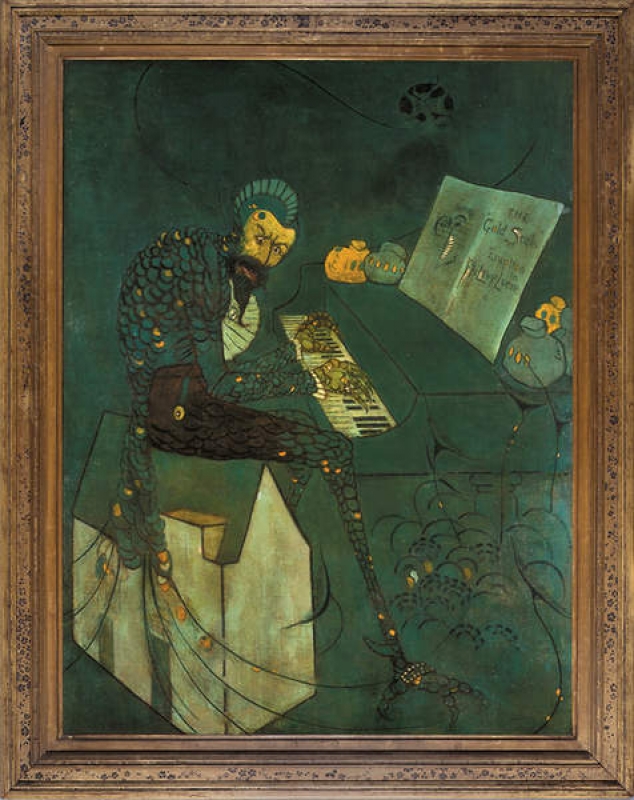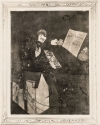Technique
The caricature was probably painted over another painting, traces of which can be seen, complicating the textures and patterns on the surface. The background is smudged and something has been rubbed out underneath it.
The Gold Scab is painted thinly, predominately in soft greens and blues. There are numerous pentimenti, showing changes in the composition. An area round the foot, for instance, has been rubbed down and repainted. The linear outlines were painted like calligraphy, and are highly stylised and elegant.
Conservation History
Unknown.
Frame
1872/1873: the Flat Whistler frame, originally intended for The Three Girls [YMSM 088], was painted about 1872/1873 with a petal decoration, signed with a butterfly, and bears the first bars from the third 'Moments Musicaux', Opus. 94, by Franz Schubert (1797–1828). 1
The butterfly signature, seen at the top, is sideways on. The frame has suffered some abrasion and paint loss.
Last updated: 23rd April 2021 by Margaret







